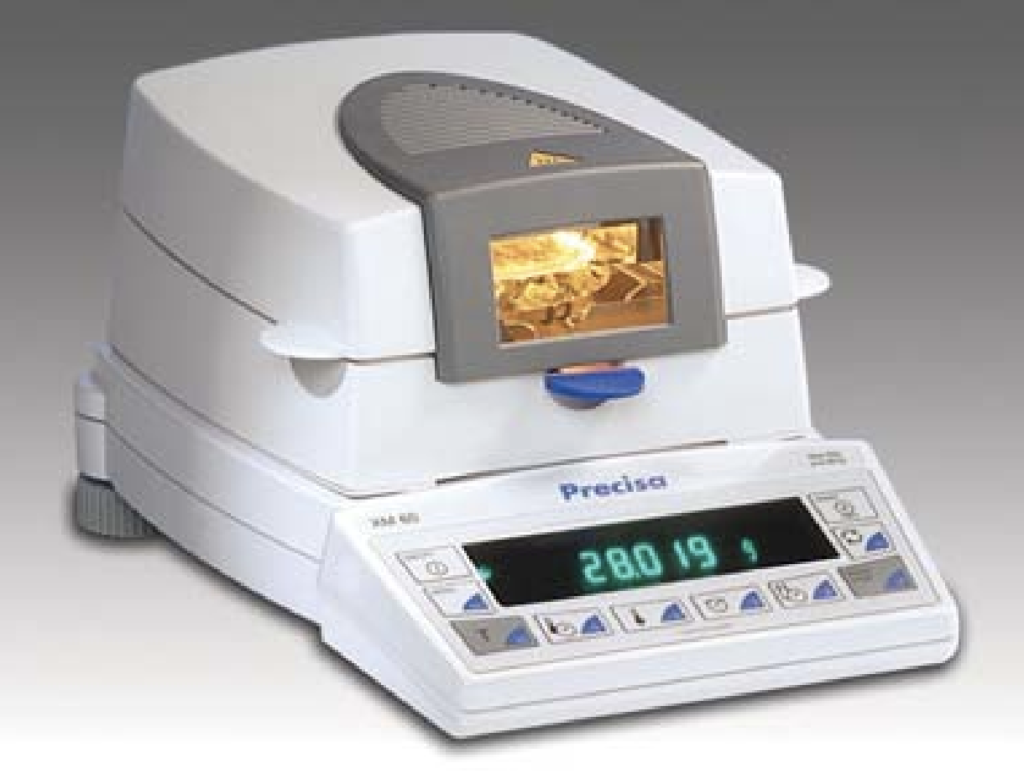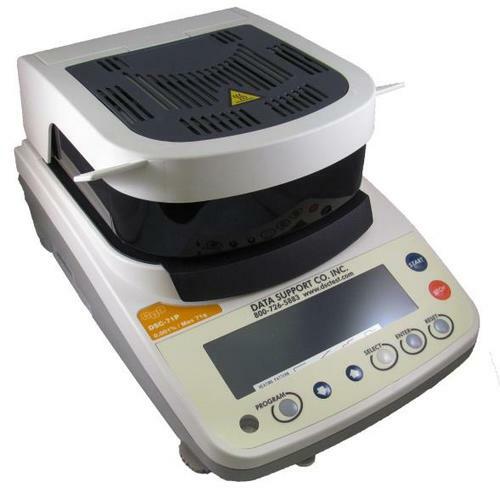
How to Determine Moisture Content
Moisture content – the amount of moisture contained in a product – can be determined by using a moisture analyzer. Specifications for correct moisture content span a host of industries and products. Here you will learn how moisture analyzers are employed by researchers, QC personnel, professional associations, and government agencies to ensure products meet moisture content specs. It includes info on how moisture analyzers work along with purchasing and operating tips.
Why Moisture Content is Critical
According to Title 21 of the Code of Federal Regulations section n, “Safe-moisture level is a level of moisture low enough to prevent the growth of undesirable microorganisms in the finished product under the intended conditions of manufacturing, storage, and distribution.”
Types of Moisture
While most folks think of moisture as water, moisture is anything that evaporates on heating. Examples include fats, oils, alcohol, and solvents.
Moreover, moisture can lurk in places you might not suspect. Examples of where moisture can exist include:
- On the surface of a sample. This can be defined as bulk water attracted to other substances. Even though you might not see it, it can be there, and its presence affects the weight of the substance. Surface moisture is most easily removed in a moisture analyzer.
- In pores or capillaries, where it is more difficult to remove. Absorbed moisture can be inside the substance particle (think wet soil) or in tiny capillaries or crevices of roughly shaped substances. Generally evaporating this type of moisture takes more time than required to remove surface moisture.
- Water molecules that are chemically bonded with other molecules as water of crystallization or as hydrates or adhesively bound water chemically bonded to a material at the molecular level.
An example of the last point is gypsum. Evaporating water of crystallization requires more energy than surface and absorbed moisture, and measuring water of crystallization in gypsum is complex because the substance may also have surface moisture as well.
Moisture Analyzer Components
A moisture analyzer, also called a moisture balance, is a programmable benchtop laboratory instrument used to measure the moisture content of small samples of products being manufactured or processed. Moisture analysis can be performed prior to, during, or after processing just before product packaging.
It combines an analytical balance with a heater to drive off moisture from products being tested.
Large oven dryers performing bulk drying on production lines, a process that can take hours. A moisture analyzer is used to confirm in minutes that bulk dryers are doing the job correctly, or that adjustments must be made in processing lines.
How Moisture Balances Determine Moisture Content
Most moisture analyzers today operate on what is called the thermogravimetric principal – that is determining the lost of weight on drying (LOD). The loss represents the amount of moisture given off during the drying process while the change in weight is recorded by the analytical balance.
Testing procedures are programmed into to the moisture balance and the change in weight is continually calculated as it performs the drying operation. Small sample sizes lower analysis time.
Drying temperature is supplied by either infrared or halogen heaters with the latter technology being most prevalent because it can be used to determine the moisture content of virtually any substance. It is also faster than infrared drying.
Microwave drying is another technology, but these instruments are somewhat larger and significantly more expensive than halogen-heated moisture analyzers.
A popular halogen moisture analyzer is the XM 60 available from Tovatech. It serves as an example of the specifications to be considered in purchasing such units. It operates at a temperature range of 30 – 230˚C in 1˚C increments.
Researchers and QC personnel select soft (slow), standard and boost (high) heat rate drying profile management without requiring ramp programming. Report generating is simplified by pressing the Key- Select™ mode until the display shows the desired report, then releasing the key to send the report to a printer or via the RS232 output to the computer.
For examples on how moisture analyzers work see our posts on using them to measure moisture content in food products, plastic resins, wood pellets , grain and flour, and sludge dewatering.
Moisture Analyzer Purchasing Criteria
If you plan to purchase a moisture analyzer and feel stymied by the number of choices, these moisture analyzer selection tips should help.
Moisture balance purchasing criteria are based on factors including:
- Resolution or the smallest difference that can be read on the display. This is also termed readability or readout.
- Repeatability – the ability of a moisture analyzer to display the same result when the same sample is tested repeatedly. Expressed as a standard deviation.
- Features important to performing moisture analysis. These are based on the characteristics of product being analyzed such as those requiring special heating profiles.
- Specialized capabilities such as testing products with extremely low moisture content specs, providing graphic displays of changing moisture content, and building libraries of frequently performed tests.
Moisture Analyzers for Specific Tasks
You can specify a moisture balance designed to simplify specific tasks. The XM60 mentioned above, for example, is recommended for gauging moisture content in the food industry.
Companies striving to deliver superior quality injected molded products are aware that the moisture content of their resins feeds is absolutely critical to product quality. The DSC 71P is an excellent moisture analyzer for testing low moisture plastics. To save you time it has a default program to test 75% of the most commonly used resins.
And as a final example, measuring moisture content in the wood, paper and pulp industries can be accomplished by several models including the DLB 160-3A or the XM 60 moisture analyzer with a 20-program memory.
Moisture Analyzer Operating Tips
With their large LED displays moisture analyzers are relatively easy to use. But when you purchase a moisture analyzer you must be familiar with and follow the precise steps necessary to obtain accurate readings for the specific products being analyzed. While operations may differ based on specific models here’s a typical analysis sequence:
- Establish the procedures for the products being tested and program the balance accordingly. Include each of these procedures in your company’s operations manual.
- Place the sample plate on the moisture balance sample plate holder then tare the balance
- Spread the recommended amount of product evenly on the sample plate and record the weight.
- Close the cover of the moisture balance to start the sequence.
- The unit’s display panel continually updates the status of the process. The analysis automatically terminates when drying is complete and the dry weight is stable, or after you specify a fixed time, or manually.
At the end of the moisture weighing all relevant data concerning initial mass, residual mass, test parameters and results can be printed out via an RS-232 interface.
When the moisture analyzer is connected to a PC the data acquisition software allows you to produce a graph plotting results against time, providing valuable information on speed of drying and confirmation of dry weight stability.
Results of individual tests can be stored in the computer memory for subsequent comparison. All moisture analyzers offered by Tovatech meet GLP/ISO record keeping requirements.
Note that moisture analyzers must be recalibrated on a regular basis and every time they are moved from one location to another. Recalibration procedures for both weight and temperature are spelled out in the user manual.
Need More Info?
Contact the scientists at Tovatech for unbiased answers to your questions on how to purchase a moisture analyzer and recommendations on the right model for your requirements.


